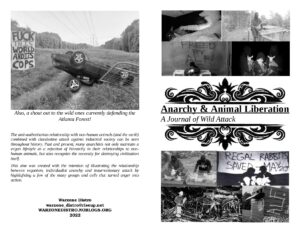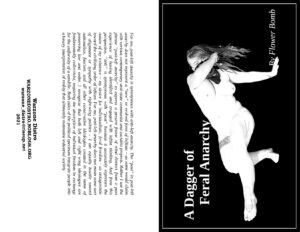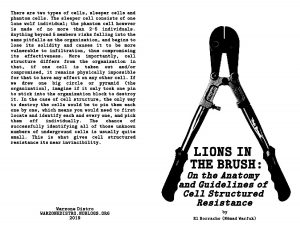
From back cover:
“The anti-authoritarian relationship with non-human animals (and the earth) combined with clandestine attack against industrial society can be seen throughout history. Past and present, many anarchists not only maintain a vegan lifestyle as a rejection of hierarchy in their relationships to non-human animals, but also recognize the necessity for destroying civilization itself.
This zine was created with the intention of illustrating the relationship between veganism, individualist anarchy and insurrectionary attack by highlighting a few of the many groups and cells that turned anger into action.”

